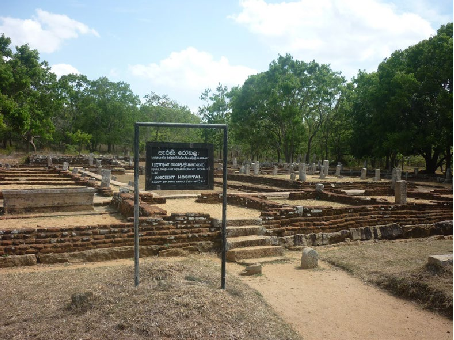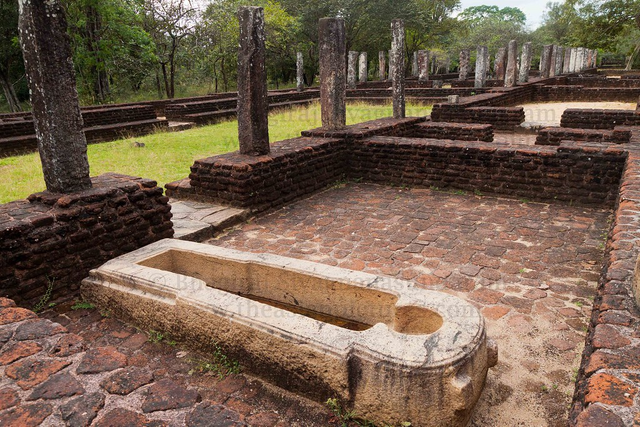Hello Wonderful Steem community,
I came here to share another cultural thing about Sinhala community. If I have find something I definitely share it with you. The culture of a country consists of many components. The culture in which a person belongs is enriched by inherited human works, physical goods, technological processes, customs, concepts and values.
Ayurveda, which means "life-sustaining science," appears to have several medical systems. Ayurvedic medicine is believed to have come to Sri Lanka with people from North India. In the meantime, the medical system of Sri Lanka was borne by the South Indian Tamils who had occasionally conquered the north of Ceylon. The Unani system of medicine, which had long been a trading practice of Muslims since ancient times, entered into a great service for the welfare of the indigenous medicine, Ayurveda and Siddha medicine. However, all three of these are considered Ayurvedic medical systems and have been incorporated by the local Sinhalese medicine for thousands of years to treat not only the physical problems but also the mental problems of the people of Sri Lanka.
Information on medical system prevalent in ancient Sri Lanka is available in the book and archaeological evidence. The Mahavamsa occupies an important place among these. King Buddhadasa and King Agbo IV are said to have been well-versed in the practice of medicine. The second most important evidence of ancient Sri Lanka's medicine comes from inscriptions. These documents contain information on state patronage, doctors' salaries and privileges, allowances, medical systems, hospital land and hospital administration.
Medical Education
This was mainly given to a select few on a personal level. The temple was prominent in ancient medical education. A person who wants to study medicine should find a teacher who is well versed in the subject. Often a monk or lay doctor was a teacher. It is compulsory to check the student's birth certificate before he or she is selected. The reason is to find out whether the science is well established and whether he is fit for it.
Medical Prescription
The medical language used was the Sanskrit language. Doing the manual on new leaflets was a daunting task when it came to copying books. The contents of some medical books were recited to the poem, making it easier to carry poetry than to prose. The teaching of medicine at that time was a privilege for a few monks and a few of the noble families.
Doctors
The doctors were treated with great respect. They were welcomed in society at the time. Even kings such as Buddhadasa, Aggabodhi VII and Parakramabahu were considered to be well-versed in the practice of medicine. The chief doctor of the royal palace was highly respected. Lands were provided for the use of doctors and they have been hereditary. The land was maintained by the government.
Hospital administration
Inscriptions mention doctors, officials and employees who were directly involved in the administration of the hospital. Medical officers are used for medical purposes. Separate departments were set up for hospital administration. Each of these bureaucrats had been assigned heads of staff and were referred to as medical lovers. They have assisted in the administration of the Vedas. A high salary was paid to the doctors who rendered a great service for the welfare of the people.
Hospitals for Aramaic
The concept of hospitals originated in India and later came to Sri Lanka through Buddhism. This is a direct Buddhist concept. In the Buddhist discourse, it is a meritorious task to help the sick and build hospitals Great monasteries were built around the cities of Anuradhapura and Polonnaruwa. The monastery, which could accommodate up to two thousand monks simultaneously, needed medical care because of its alienation from the outside world. We find important evidence in Anuradhapura, Mihintale, Polonnaruwa and Medirigiriya.

Image source: Mihintale Hospital
medicine canoe
The medicine canoe is still a marvelous design. Archaeological excavations have been carried out at Anuradhapura, Mihintale, Medirigiriya and Polonnaruwa. These are made of granite rock. The single stone has been dug to match the shape of the human body. Therefore, there is no outflow or absorption of herbal fluid. Treatment of skin ailments, air, blood, oral and fever, according to the old indigenous medical system of treating patients with herbal extracts using different, different combinations of herbal medicine, milk, ghee, oils and vinegar. This medication was used by the boat.

Image source: Medicine canoe
Medicine weights and measures
The old medical texts say that this was the accepted method at the time. The weight was based on nuts that gradually grew larger. These included mustard, sesame, paddy and mangata. The mangata, which weighs about four grains, is still used among doctors and goldsmiths.
Pharmaceuticals
Most of the drugs used in indigenous medicine were herbal. Soil, roots, leaves, flowers, fruits and bark of the plant were used for this purpose.
Medical equipment
With the development of indigenous medicine in Sri Lanka, indigenous medical equipment has become comparable. It should be noted that in addition to the most advanced medical equipment, pharmaceuticals, packaging equipment etc., it was a great addition to the medical profession.
Treatment methods
Sinhalese Medicine is the origin and evolution of Sri Lanka. Previously, people in the prevention of disease often resorted to theology and faith as well as occult magic. It is evident from these that there is a difference between these two forms of medicine as well as the medicine of sacrifice. There were no use of medicine in Sri Lanka to relieve suffering. They believe the birth of the disease is caused by demonic and demonic influences, and they run away from the dwelling place, besides offering rituals and offering dead relatives. Although indigenous medicine has a long history, it is the only practice practicing serpentine medicine today.
Traditional medicine has always been in line with astrology. The ancient practice of medicine is to treat the auspicious time according to astrology. Even after a cure, the patient is bathed for the first time with auspicious time and good day. At the end there are sacrifices for the surrendered God. We find that traditional medicine is not only a therapeutic but also a deep belief system. These rituals can be said to be the elements that fostered the culture of ancient Sri Lanka.
I read historical books and use translator app for make this blog. But some sinhala words didn't translated correctly. So I keep it similar to Sinhala language. After the see our old medical system I feel like I'm a proud man here. Thanks for reading.
This post has been resteemed by @original.content.
Follow me to keep up-to-date with posts tagged #oc and the author on ocdb's follow list.
Powered by witness untersatz!
Downvoting a post can decrease pending rewards and make it less visible. Common reasons:
Submit